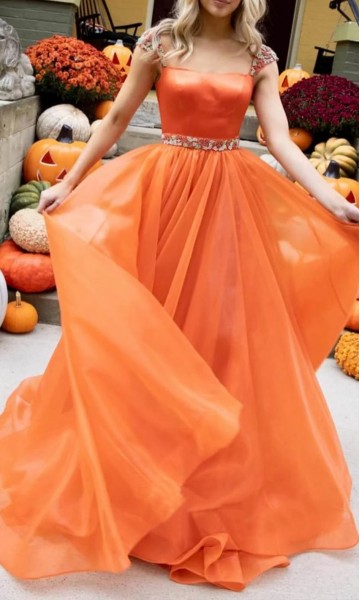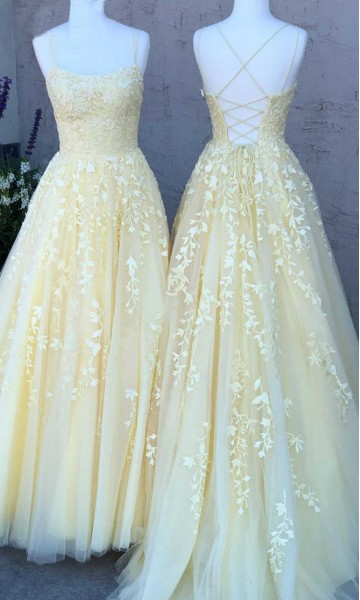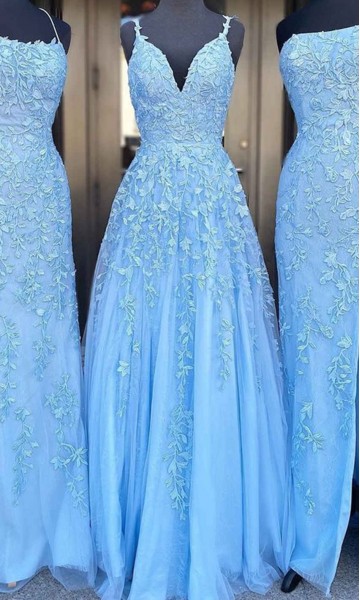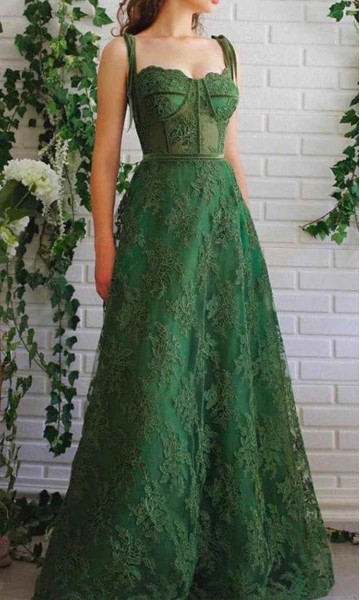Your Ultimate Guide to Choosing Your Perfect Prom Dresses Colors
Introduction: Unlock Your Perfect Prom Look With The Color Wheel
Prom night is one of the most memorable events in a young person’s life, and choosing the perfect dress color can make all the difference between feeling confident and radiant versus feeling uncertain about your look. While scrolling through endless dress options online or wandering through boutiques might seem overwhelming, there’s a secret weapon that fashion professionals have been using for decades: the color wheel.

Beyond Basic Colors: Why the Color Wheel is Your Secret Weapon
Instead of randomly choosing a dress color based on what’s trending or what catches your eye in the moment, understanding color theory empowers you to make an informed decision that will have you glowing in every photo and feeling absolutely magnificent as you dance the night away.
Using the color wheel takes the guesswork out of color selection by providing scientific principles about how colors work together and which ones will naturally harmonize with your unique features. This systematic approach ensures you’ll choose a color that not only looks amazing on you but also photographs beautifully and complements any accessories or makeup looks you’re planning.
What You’ll Learn: Mastering Prom Dress Colors for Your Big Night
In this comprehensive guide, you’ll discover how to use the color wheel to identify your most flattering prom dress colors based on your skin tone and undertones. You’ll learn about different color harmonies that can create stunning visual effects, understand what your color choice communicates about your personality, and discover how to coordinate your entire prom look—from makeup to accessories—using color wheel principles.
Understanding the Prom Dress Color Wheel: The Basics You Need
What is the Color Wheel? A Quick Primer for Prom Fashionistas
The color wheel is a circular diagram that shows the relationships between different colors.
Created by Sir Isaac Newton in 1666, this tool arranges colors in a logical sequence that reveals how they interact with each other.
For prom dress selection, the color wheel serves as your roadmap to understanding which colors will work harmoniously together and, more importantly, which colors will work harmoniously with you.
The traditional color wheel is divided into warm and cool sections, with colors flowing seamlessly from one to another. This visual representation makes it easy to see complementary colors (those opposite each other), analogous colors (those next to each other), and various other color relationships that can guide your prom dress decision.
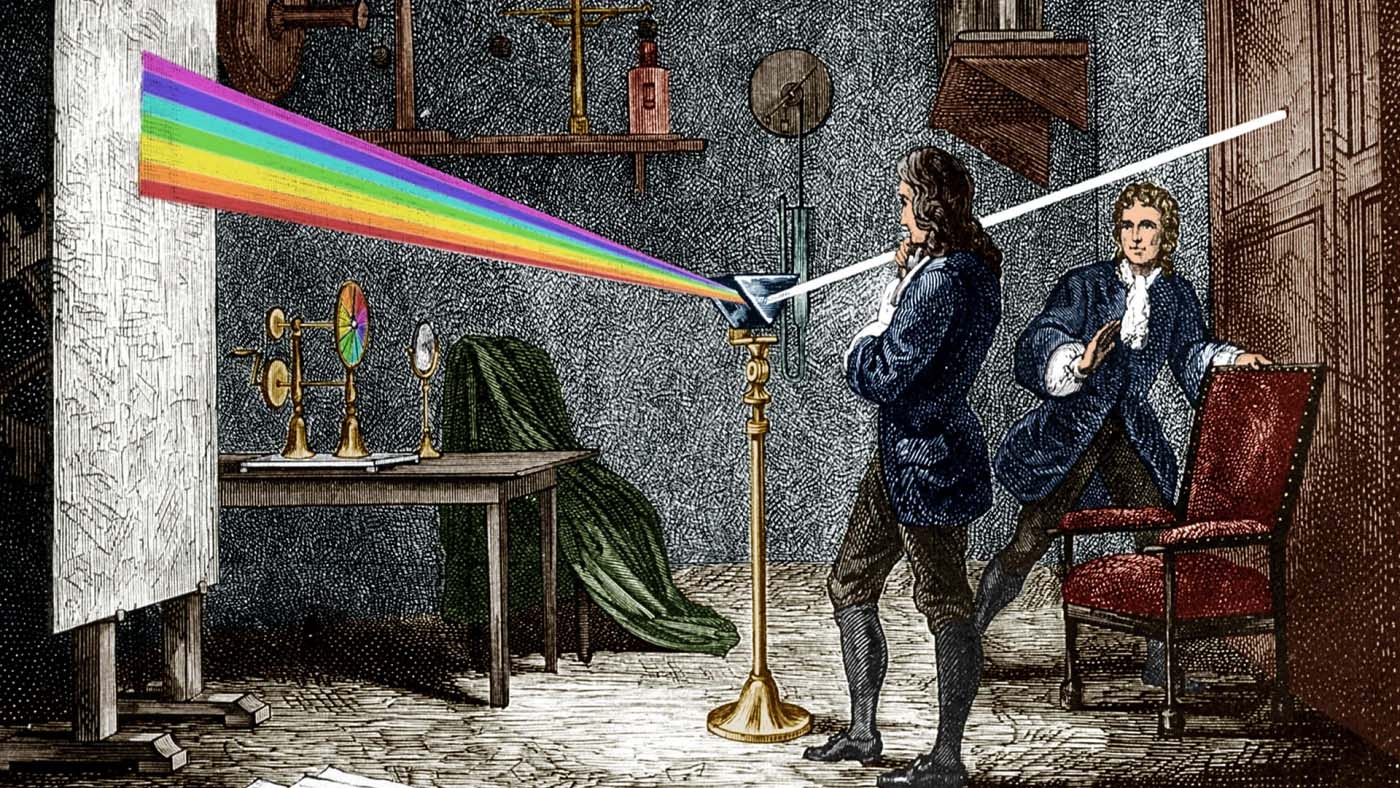
Primary Colors: The Foundation of Every Prom Palette (Red, Yellow, Blue)
Primary colors are the building blocks of all other colors—they cannot be created by mixing other colors together. In the context of prom dresses, primary colors make bold, confident statements:
- Red represents passion, confidence, and glamour. A red prom dress is a classic choice that never goes out of style and photographs beautifully. From deep crimson to bright cherry red, this color commands attention and exudes sophistication. (Related Post: The Pros and Cons of Wearing Red Prom Dresses)
- Yellow brings sunshine, joy, and optimism to your prom look. While less common than other colors, yellow prom dresses can be absolutely stunning on the right person, especially in deeper shades like golden yellow or mustard, which feel more formal and elegant. (Related Post: Does a Yellow Prom Dress Suit My Skin Tone?)
- Blue offers versatility and timeless appeal. From navy blue’s sophisticated elegance to royal blue’s regal presence, or even powder blue’s soft romanticism, blue prom dresses offer options for every style preference while remaining universally flattering. (Related Post: What Color Shoes to Wear with Navy Blue Prom Dresses?)
Secondary Colors: Mixing it up for Unique Prom Hues (Green, Orange, Purple)
Secondary colors are created by mixing two primary colors together, offering more nuanced options for your prom dress:
- Green (blue + yellow) ranges from emerald’s luxurious depth to sage’s earthy sophistication, or mint’s fresh, youthful appeal. Green prom dress is particularly flattering on those with warm undertones and can make eyes pop beautifully. (Related Post: Stop Guessing! Choose the Right Green Prom Dress for Your Skin Tone Now)
- Orange (red + yellow) might sound intimidating, but think beyond bright traffic cone orange. Coral, peach, burnt orange, and salmon offer warmth and uniqueness while remaining elegant and prom-appropriate. Check these orange prom dresses collection to find the one you love.
- Purple (red + blue) spans from deep eggplant and royal purple to soft lavender and lilac. Purple has long been associated with royalty and luxury, making purple prom dress an excellent choice for those who want to feel regal on prom night. (Related Post: Why Purple Prom Dress Is Good?)

Tertiary Colors: Sophisticated Shades for Stand-out Style
Tertiary colors are created by mixing a primary and a secondary color, resulting in more complex, sophisticated hues. These colors often have hyphenated names like red-orange, yellow-green, or blue-violet. For prom dresses, tertiary colors offer:
- Red-orange: Think of sunset coral or deep persimmon
- Yellow-orange: Beautiful golden tones like marigold or amber
- Yellow-green: Sophisticated chartreuse or olive tones
- Blue-green: Teal, turquoise, or aqua shades
- Blue-violet: Periwinkle or deep indigo tones
- Red-violet: Magenta, fuchsia, or wine colors
These colors often feel more unique and can help you stand out from the typical prom color crowd while maintaining elegance and sophistication.
Warm VS. Cool Colors: Your First Step to Personalizing Your Prom Dress
The color wheel is divided into warm and cool sections, and understanding this division is crucial for choosing your most flattering prom dress color.
- Warm colors (reds, oranges, yellows, and colors with yellow undertones) tend to energize and create a sense of intimacy and warmth. They’re often associated with autumn leaves, sunsets, and fire. If you have warm undertones in your skin, warm colors will typically be more flattering on you.
- Cool colors (blues, greens, purples, and colors with blue undertones) tend to be calming and can create a sense of space and tranquility. They’re associated with water, sky, and ice. If you have cool undertones in your skin, cool colors will generally complement you better.
This warm versus cool distinction is your first step in narrowing down the entire color spectrum to the half that’s most likely to flatter you.

Decoding Your Personal Palette: Skin Tone, Undertones, and the Color Wheel
Identifying Your Skin Tone: Fair, Medium, Olive or Dark
Your skin tone refers to the surface color of your skin and is generally categorized as fair, medium, olive, or dark. While all skin tones can wear any color beautifully, certain shades will be more naturally flattering than others.
- Fair skin often looks beautiful in both soft pastels and dramatic jewel tones. Light colors won’t wash you out if they complement your undertones, and deep colors create striking contrast.
- Medium skin has the most versatility and can typically handle a wide range of colors. You can experiment with both warm and cool tones, though your undertones will still guide which side of the spectrum works best.
- Olive skin has greenish undertones and often looks stunning in warm colors, metallics, and jewel tones. Colors like emerald green, gold, deep purple, and warm reds are particularly complementary.
- Dark skin looks radiant in vibrant, saturated colors. Rich jewel tones, bright colors, and both warm and cool shades can be incredibly flattering, depending on your specific undertones.

The Crucial Step: Uncovering Your Skin’s Undertones
While your skin tone is what you see on the surface, your undertones are the subtle hues beneath your skin that remain consistent regardless of sun exposure or other factors. Understanding your undertones is the key to choosing colors that make you glow.
- Warm undertones have hints of yellow, peach, or golden hues. People with warm undertones often tan easily and look great in gold jewelry. Your veins may appear more greenish, and you might notice yellow or peachy tones when you look closely at your skin.
- Cool undertones have hints of pink, red, or blue hues. People with cool undertones often burn easily and look stunning in silver jewelry. Your veins may appear more blue or purple, and you might notice pink or rosy tones in your complexion.
- Neutral undertones are a balanced mix of warm and cool, making you incredibly versatile in color choices. You can typically wear both gold and silver jewelry well, and both warm and cool colors can be flattering.
To identify your undertones, try these tests: Look at your wrist veins in natural light (green = warm, blue/purple = cool), hold white paper next to your face (yellow cast = warm, pink cast = cool), or consider which jewelry looks better on you (gold = warm, silver = cool).

Matching Your Undertones to The Color Wheel for Prom Success
Once you’ve identified your undertones, you can use the color wheel strategically:
- For warm undertones, focus on the warm side of the color wheel: reds with orange undertones, golden yellows, orange-based corals, warm greens like olive or lime, and purples with red undertones like magenta or plum.
- For cool undertones, embrace the cool side: blues from navy to powder blue, true reds with blue undertones, cool greens like emerald or mint, purples with blue undertones like lavender or violet, and cool-toned pinks.
- For neutral undertones, you have the flexibility to choose from both sides of the color wheel, but pay attention to the specific shade. You might gravitate toward colors that are perfectly balanced between warm and cool, or you might find that certain colors from both sides work well for you.

The Power of Metallics: Gold, Silver, and Rose Gold Based on Your Undertone
Metallic prom dresses are increasingly popular, and your undertones guide which metallics will be most flattering:
- Gold complements warm undertones beautifully, enhancing the natural warmth in your skin and creating a radiant, sun-kissed effect.
- Silver is stunning on cool undertones, complementing the natural coolness in your skin and creating an elegant, sophisticated look.
- Rose gold works well for both warm and neutral undertones, offering warmth while maintaining a soft, romantic feel.
- Copper and bronze are excellent for warm undertones, providing earthiness and richness that enhances natural warmth.
Mastering Color Harmonies: Prom Dress Color Schemes from The Wheel
Complementary Colors: The Bold and Beautiful Statement for Prom Night
Complementary colors sit directly opposite each other on the color wheel, creating maximum contrast and visual impact. While you might not wear two complementary colors together in your dress, understanding this relationship helps you choose accessories, makeup, or coordinate with your date’s attire.
Classic complementary pairs include red and green, blue and orange, and purple and yellow. For prom, this might translate to a red dress with green accessories, or a blue dress with subtle orange-toned makeup. The key is using one color as dominant (your dress) and the other as an accent.
Complementary color schemes create vibrant, energetic looks that photograph beautifully and ensure you’ll stand out in the crowd.
However, use this approach thoughtfully—too much contrast can be overwhelming, so consider using one color at full intensity and the other as a softer accent.
Analogous Colors: Effortless Harmony and Sophistication for Your Prom Dress
Analogous colors sit next to each other on the color wheel, creating harmonious, pleasing combinations that feel naturally coordinated. This approach is perfect for creating sophisticated, pulled-together looks that feel effortless and elegant.
Examples include blue-green-purple combinations, red-orange-yellow groupings, or yellow-green-blue arrangements. For prom, this might mean choosing a dress in one color and selecting accessories, shoes, or makeup in neighboring colors.
Analogous color schemes are particularly effective for creating gradient effects or ombré looks in dresses, and they photograph beautifully because the colors naturally complement each other without competing for attention.
Monochromatic Schemes: Triadic and Split-Complementary (Brief mention for adventurous fashionistas)
For those who want to explore more advanced color relationships:
- Monochromatic schemes use different shades, tints, and tones of the same color. A monochromatic blue look might include navy dress, powder blue shoes, and royal blue accessories. This creates sophisticated depth while maintaining color harmony.
- Triadic schemes use three colors evenly spaced around the color wheel (like red, yellow, and blue). This approach is bold and vibrant but requires careful balance to avoid overwhelming the look.
- Split-complementary schemes use one base color and the two colors adjacent to its complement. This provides contrast while being less intense than true complementary schemes.
These advanced color relationships offer opportunities for truly unique prom looks but require more careful consideration and styling expertise.
Beyond the Hue: What Your Prom Color Choice Communicates (Color Psychology)
Warm Colors & Their Message for Prom Night
Warm colors naturally draw attention and convey energy, confidence, and approachability. When you choose a warm-colored prom dress, you’re communicating several powerful messages:
Red suggests passion, confidence, and glamour. It’s the color of love and power, making it perfect for those who want to make a bold, unforgettable statement. Red also conveys sophistication and timeless elegance.
Orange and coral communicate warmth, creativity, and optimism. These colors suggest someone who is friendly, energetic, and confident enough to stand out from the crowd. They’re perfect for outgoing personalities.
Yellow and gold represent joy, intelligence, and luxury. Golden tones suggest warmth and richness, while brighter yellows communicate happiness and confidence.
Warm colors are ideal for those who want to appear approachable, confident, and energetic. They photograph beautifully under most lighting conditions and create a natural glow against the skin.
Cool Colors & Their Message for Prom Night
Cool colors tend to be calming and sophisticated, conveying different but equally powerful messages:
Blue in all its shades represents trustworthiness, stability, and elegance. Navy blue suggests classic sophistication, while royal blue conveys confidence and regal bearing. Lighter blues communicate serenity and grace.
Green represents growth, harmony, and natural beauty. Emerald green suggests luxury and sophistication, while softer greens communicate freshness and tranquility.
Cool colors are perfect for those who want to convey elegance, sophistication, and timeless style. They’re often seen as more formal and classic, making them excellent choices for traditional prom settings.
Neutral & Metallic Colors & Their Message
Neutral and metallic colors offer their own unique psychological messages:
Black represents sophistication, elegance, and timeless style. It’s the ultimate in chic fashion and suggests confidence and mystery. Black never goes out of style and photographs beautifully.
White and champagne suggest purity, elegance, and classic beauty. These colors convey sophistication and timeless appeal while remaining fresh and youthful.
Metallics like gold, silver, and rose gold suggest luxury, glamour, and special occasion elegance. They catch and reflect light beautifully, ensuring you’ll sparkle in photos and under dance floor lights.
Neutral tones like taupe, blush, and soft gray suggest understated elegance and refined taste. They’re perfect for those who prefer subtle sophistication over bold statements.
Choosing a Color That Reflects Your Personality and Desired Mood for Prom
Your prom dress color should align with both your personality and the mood you want to create for your special night. Consider these questions:
- Are you naturally outgoing and energetic, or do you prefer quiet elegance?
- Do you want to make a bold statement or prefer understated sophistication?
- Are you drawn to classic, timeless looks or do you like to experiment with trends?
- What mood do you want to create in your prom photos—dramatic, romantic, fun, or elegant?
Your answers will guide you toward colors that not only flatter you physically but also represent who you are and how you want to feel on prom night.
Prom Season Trends & Timeless Classics: Navigating Current & Enduring Shades
The Ever-Popular Prom Dress Colors That Never Fade (e.g., Black, Navy, Emerald Green, Hot Pink)
Some prom dress colors have proven their staying power across decades, remaining popular because they’re universally flattering and photograph beautifully:
- Black remains the ultimate classic, offering sophistication and elegance that never goes out of style. It’s slimming, versatile, and allows accessories and personal style to shine.
- Navy blue provides classic elegance with more visual interest than black. It’s particularly flattering on most skin tones and works beautifully with both gold and silver accessories.
- Emerald green has been a prom favorite for generations, offering richness and luxury while being surprisingly flattering on many different skin tones and undertones.
- Hot pink and fuchsia provide vibrant color while maintaining sophistication. These colors photograph beautifully and create stunning contrast with most skin tones.
- Deep red and burgundy offer timeless elegance with dramatic impact. These colors suggest confidence and sophistication while remaining classic and appropriate.
- Royal purple combines the stability of blue with the energy of red, creating a color that’s both regal and approachable.
These colors continue to be popular because they offer the perfect balance of visual impact and timeless appeal, ensuring your prom photos will look beautiful for years to come.
Adapting Trends to Your Personal Color Wheel and Style
While it’s tempting to choose colors based solely on current trends, the most successful prom looks combine trending elements with personally flattering colors. Here’s how to adapt trends to work for you:
If the trending color doesn’t suit your undertones, look for variations that do. For example, if coral is trending but you have cool undertones, consider a coral with pink undertones rather than orange undertones.
Use trending colors in accessories rather than the dress itself if they’re not in your best color family. This allows you to participate in trends while wearing a dress color that truly flatters you.
Consider trending elements beyond just color—if certain shades are popular, look at what makes them appealing (their vibrancy, their metallic quality, their depth) and find similar qualities in colors that work better for you.
Remember that the best prom look is one that makes you feel confident and beautiful, regardless of what’s currently popular. Trends come and go, but a well-chosen color that flatters your unique features will look stunning in photos for decades to come.
The Complete Prom Look: Coordinating with Your Dress Color
Makeup Magic: Enhancing Your Dress with Color Wheel Principles
Once you’ve chosen your perfect prom dress color, use color wheel principles to create a harmonious makeup look that enhances both your natural features and your dress:
- For warm-colored dresses (reds, oranges, yellows), consider warm-toned makeup. Golden or peach highlighters, warm brown eyeshadows, coral or peach blushes, and lipstick in similar warm families will create cohesion. Avoid cool-toned pinks or purple-based colors that might clash.
- For cool-colored dresses (blues, greens, purples), embrace cool-toned makeup. Silver or pearl highlighters, cool-toned eyeshadows in grays or cool browns, pink-based blushes, and lipstick in berry or cool pink tones will complement your dress beautifully.
- For neutral or metallic dresses, you have more flexibility. Match your makeup’s undertones to your skin’s undertones rather than the dress, or choose makeup that complements the specific metallic tones in your dress.
- Consider complementary colors for dramatic effect. If you’re wearing a blue dress, a subtle hint of orange in your eyeshadow (think warm bronze or copper tones) can make your eyes pop. If you’re wearing green, subtle red undertones in your lipstick can create beautiful harmony.
The key is balance—if your dress is the statement piece, keep makeup elegant and harmonious. If your dress is more understated, you might choose to make your makeup more dramatic while still respecting color harmony principles.
By understanding and applying color wheel principles to your prom dresses 2026 selection and overall look, you’ll create a sophisticated, harmonious appearance that’s both on-trend and timelessly flattering. Your prom night deserves nothing less than a look that makes you feel absolutely radiant.






